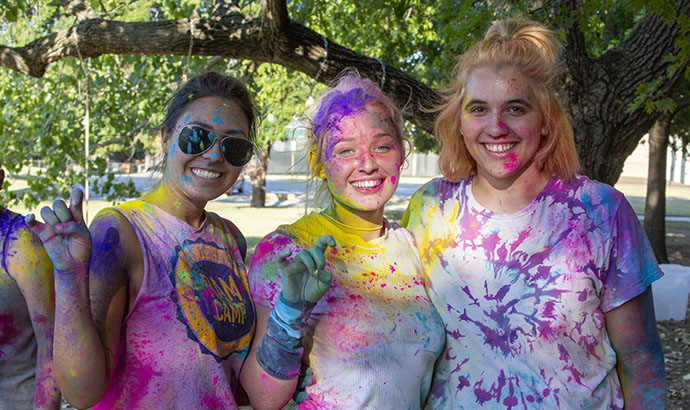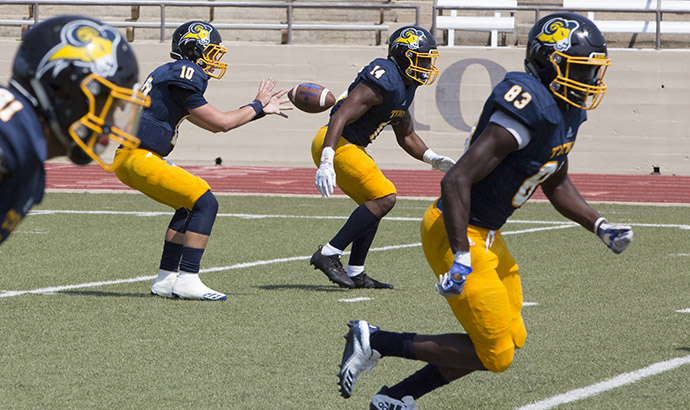Stories From the Virtual Classroom

On March 23, Texas Wesleyan moved all face-to-face instruction to an online format for the rest of the spring semester. We wanted to find out how things are going now that living rooms, bedrooms and kitchens are serving as classrooms. We asked Christopher Ohan, associate professor of history, to share stories from his fellow faculty.
In Texas Wesleyan’s trademark smaller face-to-face classes, faculty usually do not ask if students can hear or see. However, over the past week, the phrase “Can you hear me now?” echoed across virtual platforms and seemingly resurrected Verizon’s old tagline, to which was added “Can you see me now?” There was a fair share of technical problems and a bit of trepidation from both faculty and students as they met for the first time in the new realm of virtual teaching. But many of these problems became teachable moments when faculty and students shared tips about sound, video and connection issues. Since this teaching shift has affected everyone during a global crisis, most of us began classes last week by simply communicating with students—listening, reassuring and a higher-than-normal amount of laughing. In fact, that laughter is therapeutic in this new setting, particularly during impromptu moments.
After about an hour into my Tuesday evening class, we took a short break. I clicked the icon to turn off the camera and got up to get some water. When I returned, I noticed several comments in the chat box from students commenting on my legs! To my horror, and the students’ entertainment, I had muted the microphone but not turned off the camera. When I stood up, they saw that I was not wearing pants, but shorts. Evidently, there is a loss in credibility when students unexpectedly see a professor’s legs, even though some of the comments were flattering. Later in the week, as I heard from other faculty, I learned that while I may have been alone in accidental exposure, other funny stories were emerging from classes.
Connie Whitt-Lambert, professor of theatre arts, definitely had the funniest animal-related class story. It began when her puppy Teaching Assistant, Patch, barked at a passer-by during her first class on Monday. “My playwriting students thought it was hysterical,” she wrote. “They took turns turning on their webcams to show me that more than half of them had a dog in their lap or nearby, proving that online learning is better with a dog.” It got better on Tuesday when Patch “barked in one of my speech classes [and] apparently several of those students also had dogs with them and my pup’s barking set off a chain reaction of barking throughout the world—I have several students who returned to their homes abroad.” Laughter has been good medicine for all as we’ve settled into the “new normal.”
Hopefully, this normal will be short-lived. During a virtual faculty “happy hour” last Thursday, several shared that they missed walking around the classroom and seeing students’ faces. Working, teaching and, indeed, learning in this new environment is challenging for all—students, faculty and staff. We will all make mistakes and deal with the new disruptions, such as dogs barking, parents/spouses/children popping into the audio or video, and other technical issues. Through all of this, our institution is engaging in different aspects of creative problem solving. Faculty is figuring out how to accomplish learning, while staff is creating creative ways to engage current students and advise and recruit future students. Our performance now is not only a demonstration of what we aim to impart to our students, it’s an indicator of Texas Wesleyan’s resilience.







